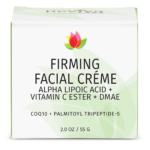Ricinus Communis Seed Oil
Castor oil, a versatile and historic substance, originates from the castor bean plant, prevalent in tropical regions of Eastern Africa and the Mediterranean. Despite its diverse applications, ranging from shoe polish to food additive and motor lubricant, its inclusion in skincare and cosmetic products like lipsticks and highlighters is where it truly shines, thanks to its unique properties.
What sets castor oil apart is its main fatty acid, ricinoleic acid, constituting 85-95% of the oil. This acid boasts an additional hydrophilic component (-OH group) on its fatty chain, bestowing castor oil with several distinctive characteristics. It’s thicker than most oils and exhibits unique solubility traits, such as dissolving in alcohol but not in mineral oil. Its molecular structure also permits a variety of chemical modifications, resulting in numerous castor oil-derived ingredients. Notably, it’s the most lustrous of all natural oils, imparting a superior gloss when applied to the skin.
Besides its aesthetic appeal, castor oil is a highly effective emollient and occlusive agent, adept at minimizing skin moisture loss. As a result, it’s a common component in moisturizers, albeit in modest amounts. Though adverse reactions to castor oil are rare, those with sensitive skin are advised to perform a patch test, as with any skincare ingredient, to ensure compatibility.









